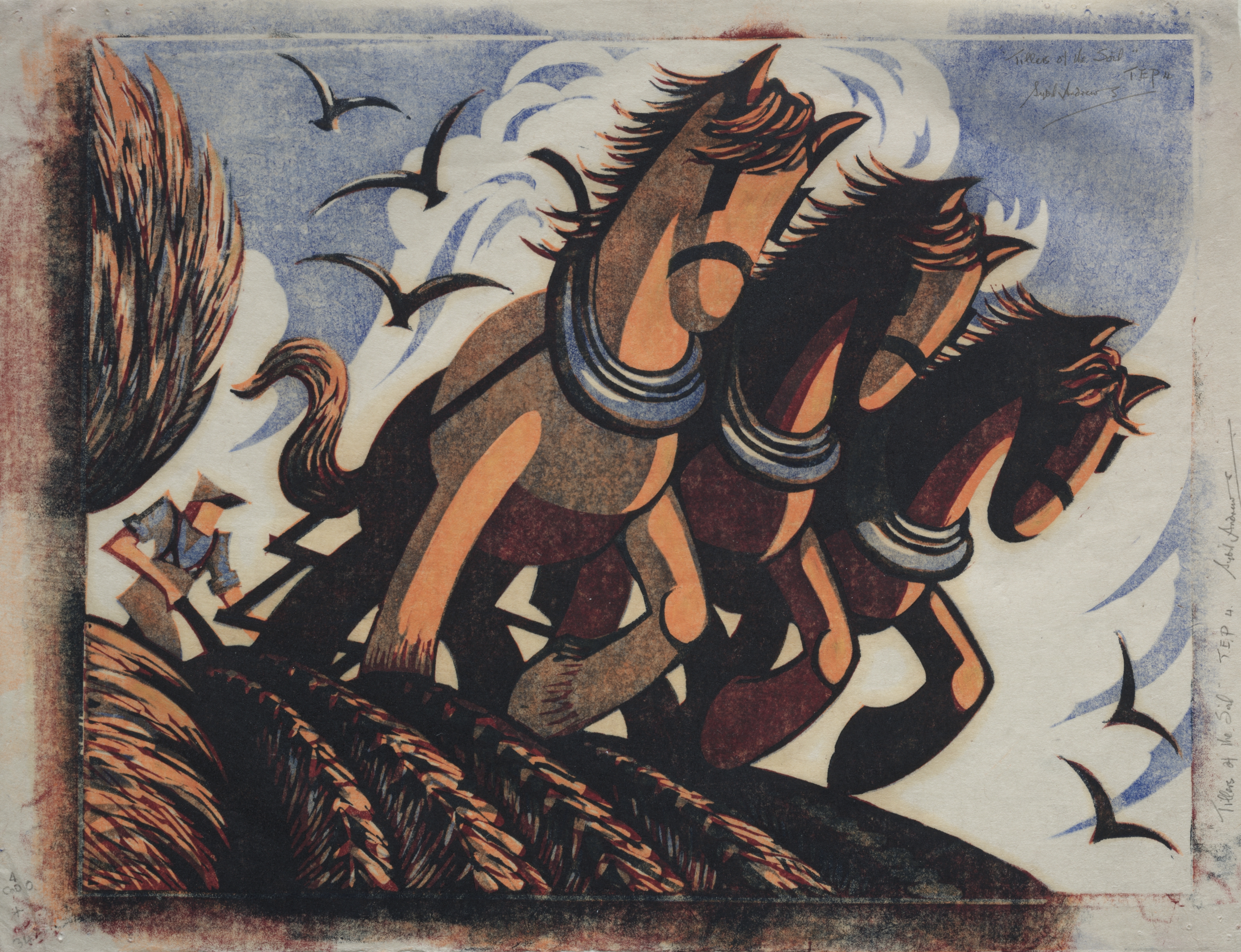The Cleveland Museum of Art
Collection Online as of April 20, 2024

Tillers of the Soil
1934
(Canadian, 1898–1992)
© Glenbow-Alberta Institute, 2010
Catalogue raisonné: White 31
Location: not on view
Description
Claude Flight, an instructor at the Grosvenor School of Modern Art in London, appreciated linoleum's unique characteristics, popularizing the floor covering as an important printmaking medium in the 1910s. Like a woodcut, a linocut is a relief technique. A knife or gouge is used to cut away the background, leaving the lines standing in relief. The surface of the block is then inked and printed, sometimes by hand. Because linoleum is supple, easily incised, cheap, and readily available, its use quickly became widespread. Andrews, Flight's most important and famous student, chose subjects from everyday life. Using bold lines and flat shapes printed as bright masses of color, she exploited the fact that linoleum is easy to cut in fluid lines and has a lightly textured surface. Like Tillers of the Soil, Grosvenor school linocuts purposefully look handmade. Despising printing with a press, which obtained "deplorably mechanical[,]" mass-produced prints, Flight continued to espouse the 19th-century arts-and-crafts tradition of William Morris, emphasizing printing by hand to retain the personal expression of the artist.- Against the Grain: Woodcuts from the Collection. The Cleveland Museum of Art, Cleveland, OH (organizer) (August 17-November 9, 2003).Year in Review for 1986. The Cleveland Museum of Art, Cleveland, OH (organizer) (February 4-March 15, 1987).
- {{cite web|title=Tillers of the Soil|url=false|author=Sybil Andrews|year=1934|access-date=20 April 2024|publisher=Cleveland Museum of Art}}
Source URL:
https://www.clevelandart.org/art/1986.39